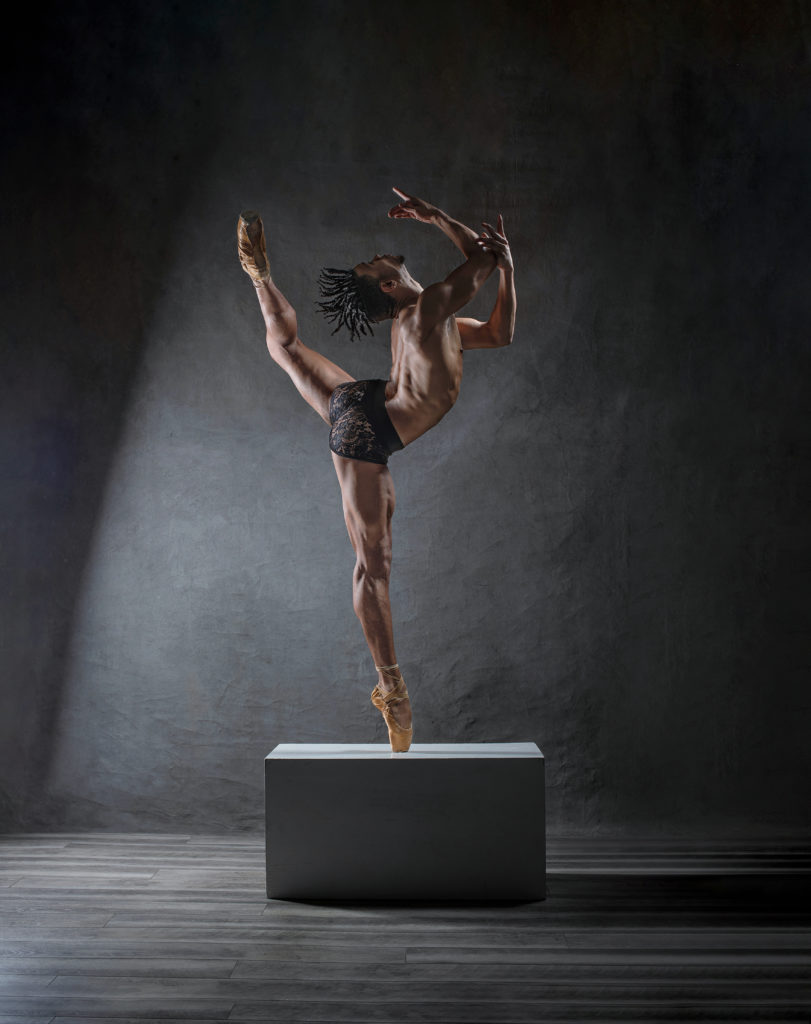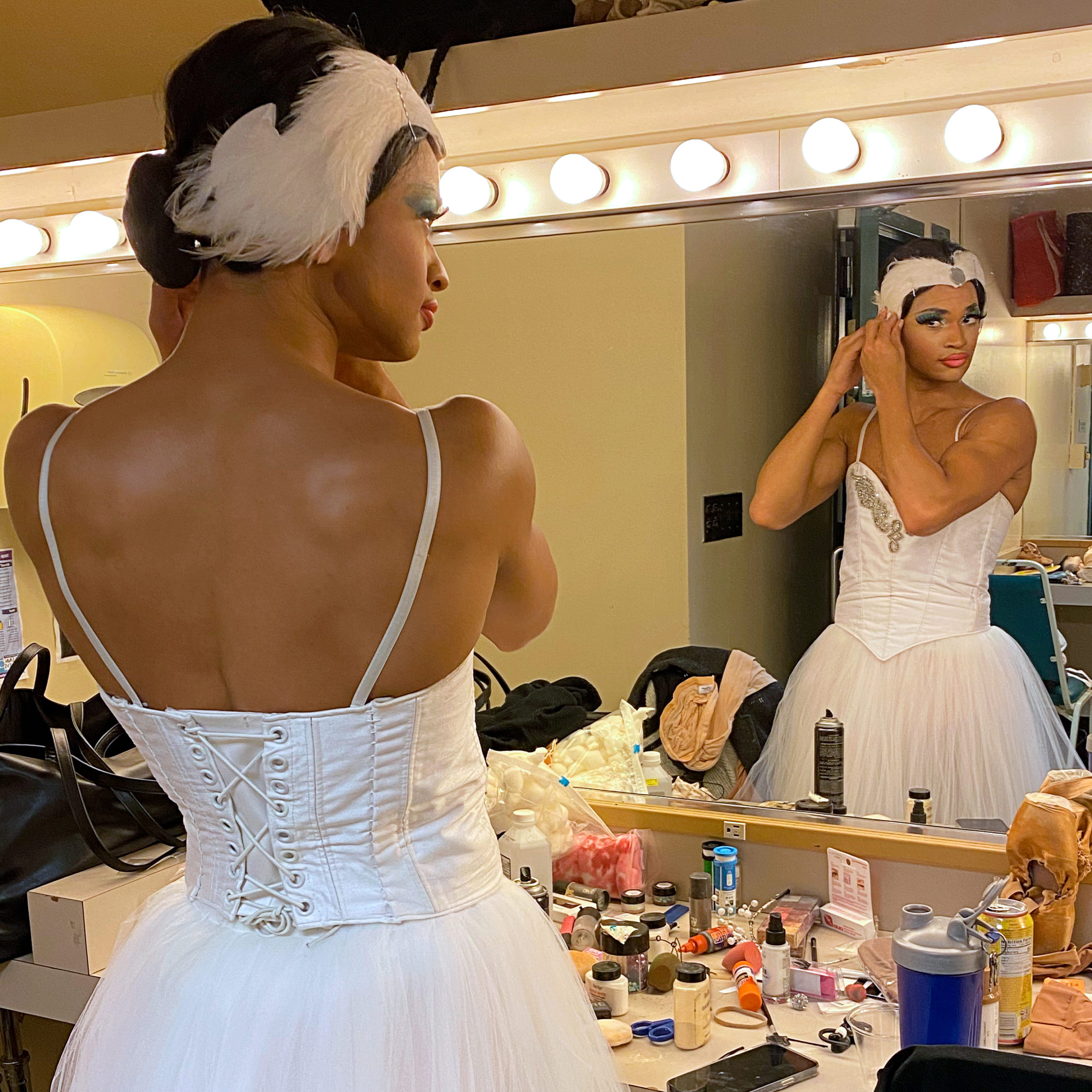Maxfield Haynes on Nonbinary Ballet and Joining the Trocks
Maxfield Haynes is only 24, but they already need a second page for their resumé. Classically trained at San Francisco Ballet School, and blessed with fierce extensions and meticulous pointe technique, the Kentucky native earned a BFA at NYU Tisch before joining Complexions Contemporary Ballet in 2018. Along the way, Haynes has performed in James Whiteside’s WTF video (and reprised it at Madonna’s birthday party), danced for Dior and Cartier, created a film for Works & Process Artists Virtual Commissions, danced in Isaac Mizrahi and John Heginbotham’s Peter and the Wolf, joined the faculty at the Joffrey Ballet School’s summer intensives and become a role model for nonbinary ballet dancers.
Now Haynes is adding another highlight to their list: debuting as a member of Les Ballets Trockadero de Monte Carlo, the pioneering drag ballet company, during the Trocks’ annual December engagement at New York City’s Joyce Theater. (Haynes’ alter-ego is Sascha Altschmerz.) Haynes talked to Pointe over Zoom about their fast-track career—and about claiming ownership of ballet as a form of authentic self-expression.
Why did you want to join the Trocks?
I apprenticed with them while I was at Tisch—they were the first company I auditioned for. I felt ready for a change from Complexions. I appreciated everything I gained from them, working as a soloist and touring. I was ready to explore the depths of the classical style, and I wanted something with more characters to delve into. I’m happy to be in a company that is literally there to make you laugh—we’re there to help bring some levity to life.
Your pointework is so beautiful. When did you start training on pointe?
I started when I was about 15, just teetering around in a pair of dead pointe shoes that a friend gave me, not really doing anything of substance. Then I got to San Francisco Ballet School, and [when I mentioned training on pointe] they were like, “No, we don’t really do that. You’re a guy.” To me, pointe is just a form of expression. I didn’t really start training on pointe until four years ago, during my second year at NYU.
You’ve said that you’ve been able to be unapologetically yourself throughout your entire career. Was that the case during your training as well?
Definitely not. Training was a means to an end, to give me the classical base that I could do whatever I wanted with. I got a late start—I started dancing when I was 12. At 16 I got a full merit scholarship to train at SFB School because I had a very strong facility. However, my technical base was lacking—how I pulled into a soutenu, all of these little things that they train you to do from age 9. So they were more focused on getting my technique straight than letting me do what I wanted. In the time that I’ve been able to make my own choices, I have been met with success. At the Dance Theatre of Harlem summer intensive, I was taking pointe class, I was doing the Black Swan variation. They were like, “If you can do it, hit it!”

It sounds like you already had a vision for yourself as an artist when you started dancing.
I think so. I wanted to be so versatile in ballet that I could do a double tour one day and 32 fouettés on pointe the next. I wanted to be a purely open channel for whatever somebody’s vision is. I don’t see pointe shoes as tied to women. I don’t see certain épaulements and ways of performing as tracking to one gender or another. I want to be able to do it all. I want to be able to paint with every color of the rainbow.
As a student you already had an unusually strong sense of self. You could say to yourself, “These are the things that I want to do—they’re not letting me do them, but that doesn’t mean that I can’t hold on to them.”
It’s so funny that you mention that. I’m lucky to have had a strong sense of self from day one. I have pictures of myself in dresses and tutus from when I was in, like, preschool—just because they’re beautiful, and I like to feel beautiful. [But] it was hard for a while, before I could actually have the courage to my own convictions.
What made it possible to be truly authentic as a dancer?
It was getting out of that very rigid, structured ballet environment that made me feel like I was lesser-than. When I got to Tisch I realized that I wasn’t actually behind everyone my age. I saw absolutely stunning dancers who were completely different from me. I was like, “Oh, there are other things available to me; I don’t have to be just this one type of dancer.”

You’ve done so many interesting projects. Do you have a favorite so far?
Dancing StarDust with Complexions—I got to dance the same track as Addison Ector and embody that androgynous David Bowie character. I got to dance on pointe with Complexions all across the world, from Ukraine to New Zealand. That was very major for me. The work that I’ve done with John Heginbotham and Isaac Mizrahi, as the Bluebird for their Peter and the Wolf and Third Bird, which is premiering in June 2022, has been the most artistically fulfilling because we get to work with a number of different artists of a number of different ages—Gus Solomons jr is in his 80s, and then I’m the youngest person in the room. I also get to see the reactions that kids are having seeing someone who is in a male body, muscular, masculine, dancing these very sprightly and effervescent roles on pointe. I have kids coming up to me afterwards saying, “Can you really fly?” That has been very fulfilling, to help transmit “People who look like me—yeah, you can do anything.”
Being unapologetically yourself—you’re part of a new generation that gets to do that.
I am, and I’m so lucky. I think about some of the more senior members of Trockadero, like Robert Carter—Olga Supphozova—who has been doing it for 26 years, since before it was even close to being in vogue. He was the one doing triple fouettés on pointe every night for hundreds of people. I feel very lucky to be working in a company with people like that.






